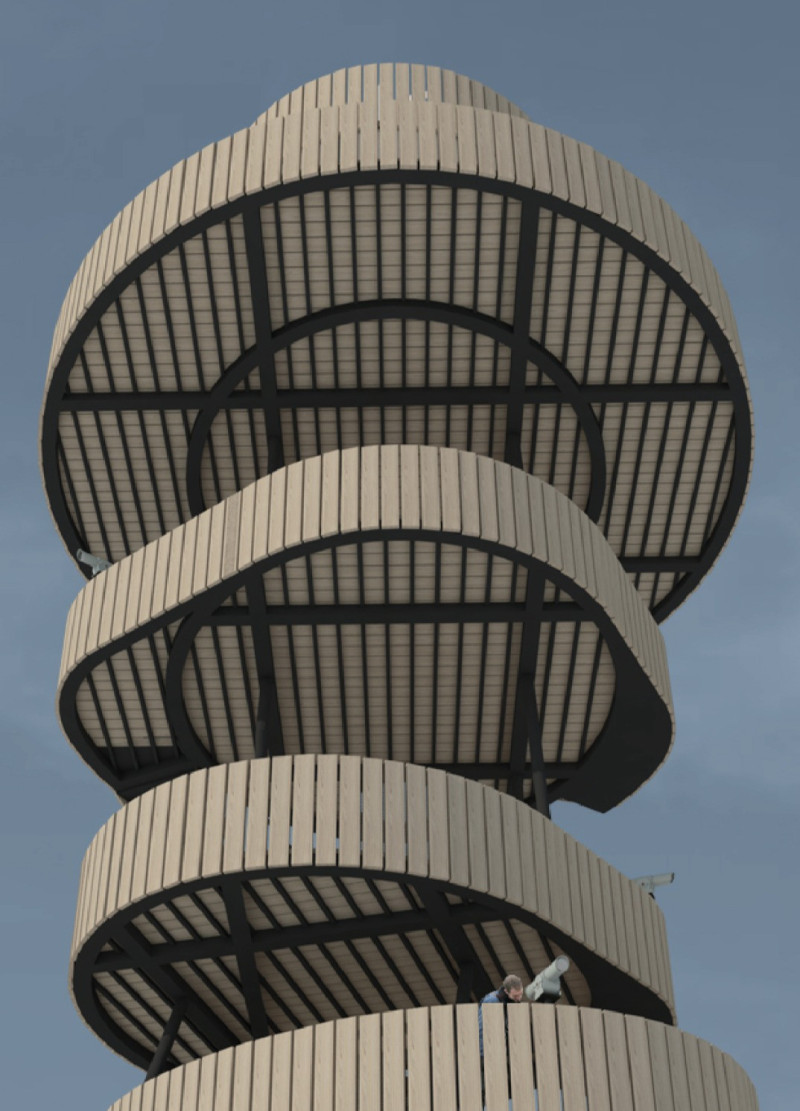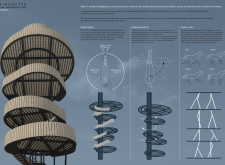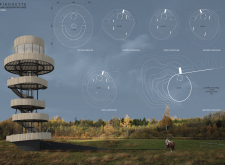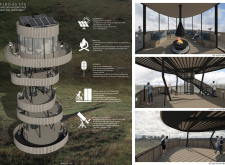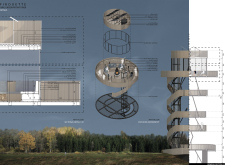5 key facts about this project
The Kurgi Observation Tower is located at Kurgi farm and aims to celebrate the life of horses, particularly the Latvian Ardennes breed. The design takes inspiration from the behaviors and life cycles of these animals. Its form and circulation create a connection between visitors and the surrounding area, offering an experience that reflects the essence of equine life.
Architectural Concept
The design engages with the physical traits and movements of horses. Visitors can experience the horse's vision through wide-ranging views that include areas intentionally designed to mimic a horse's blind spots. This feature creates a deeper connection to the landscape and emphasizes the relationship between horses and their environment.
Vertical Circulation
A lift is situated at the center of the building, which allows easy access between floors. This lift acts as both a practical element and a design feature, representing the gracefulness of a horse's pirouette. Moving through the tower is fluid and encourages visitors to explore various levels while engaging with their surroundings.
Spatial Expression
The layout of the tower reflects the different gaits of horses—walk, gallop, canter, and trot. Each floor is organized to represent these motions through changes in ceiling heights and the arrangement of spaces. This thoughtful design encourages visitors to interact actively with the structure, creating a lively experience that resonates with the rhythms of horses.
Sustainability Features
Sustainable design choices are integrated throughout the building. Solar panels are used to reduce carbon emissions, making the structure environmentally friendly. The design also includes a wood-burning fireplace that burns logs from tree maintenance on the farm. Furthermore, pellets made from waste materials contribute to a responsible approach to energy consumption.
Observation telescopes on each level enhance the experience by framing views of specific areas, such as the farmhouse and training area. These telescopes help visitors appreciate the connection between the building and the natural landscape, emphasizing the harmony between human-made structures and the environment.


